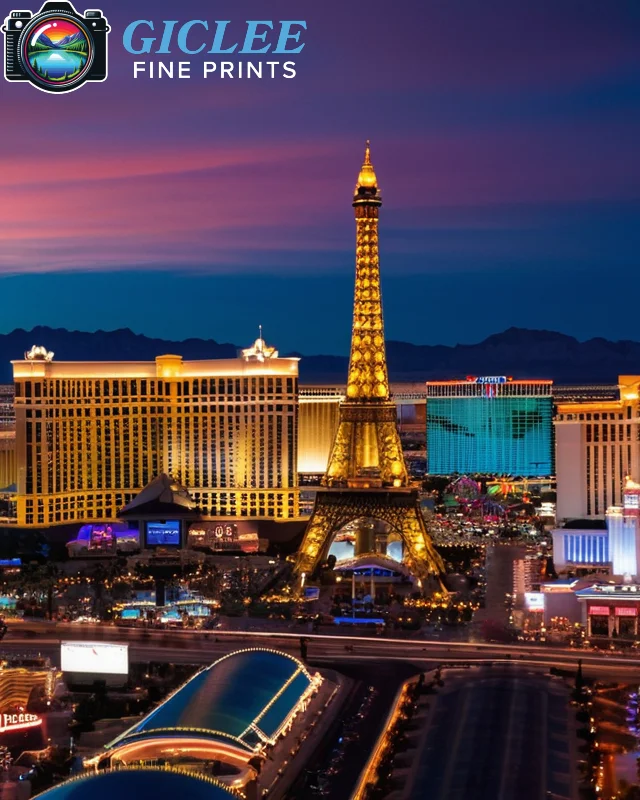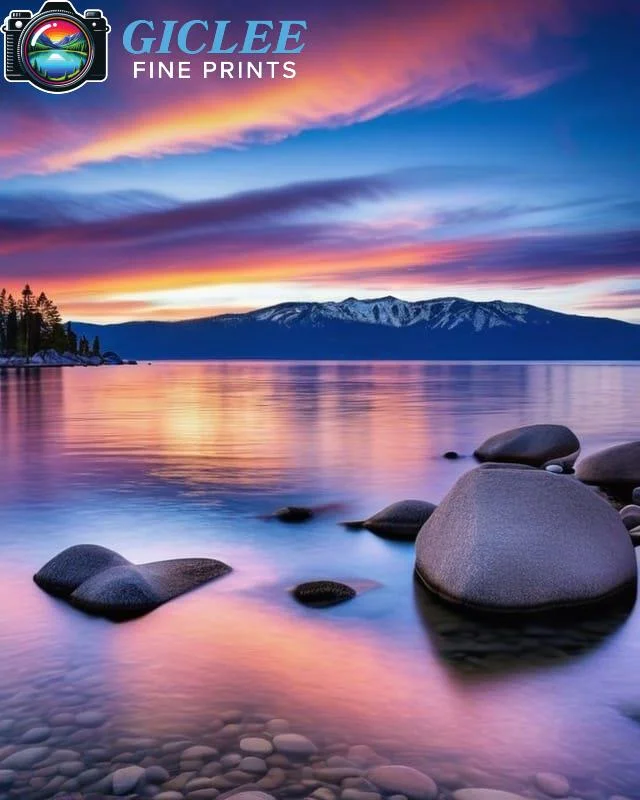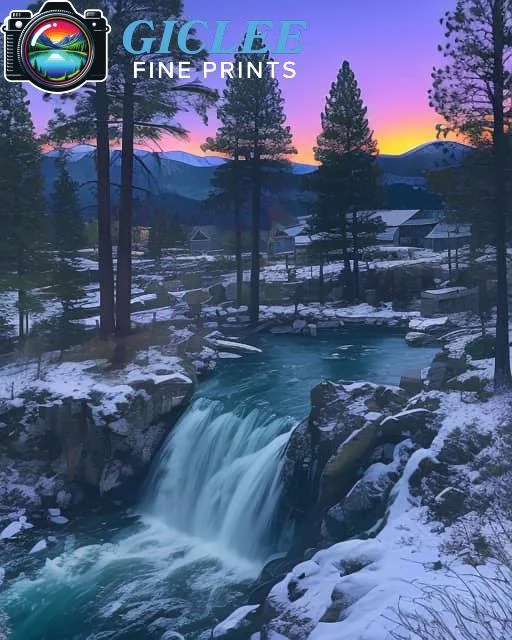
When it comes to printing your artwork or photography, the choice between giclee fine prints and traditional photo prints can have a significant impact on the final outcome. Both printing methods offer unique benefits, but understanding their differences is essential for achieving the look and quality you desire. At Giclee Fine Prints, we specialize in both types of printing, providing expert guidance to help you select the best option for your specific needs.
Printing Process: Inkjet vs. Photographic Methods
The primary difference between giclee fine prints and traditional photo prints lies in the printing process and technology used to produce each type of print.
Giclee Fine Prints:
- Inkjet Printing Technology: Giclee prints are created using high-resolution inkjet printers that spray microscopic droplets of archival-quality, pigment-based ink onto the printing surface. This technology allows for exceptional detail, vibrant colors, and long-lasting prints.
- Wide Color Gamut: Giclee printers use a wider range of colors (often 8 or more ink cartridges) to achieve highly accurate color reproduction. This makes them ideal for artwork with subtle gradients, fine details, and complex color schemes.
- Archival Quality: Giclee printing is designed to produce museum-quality prints that last for decades without fading, thanks to the use of pigment-based inks and archival substrates like canvas and fine art paper.
Photo Prints:
- Traditional Photographic Process: Traditional photo prints are typically produced using a photographic process that involves exposing light-sensitive paper to an image and then chemically developing the print. This method is widely used for both digital and film photography.
- Dye-Based Inks or Chemical Processing: Depending on the type of photo print (digital or traditional), photo prints use either dye-based inks or a chemical process to create the final image.
- Limited Color Range: While traditional photo prints offer good color reproduction, they may not match the broader color gamut provided by giclee printing. Dye-based inks are generally less durable than pigment-based inks, which means photo prints may fade more quickly over time.
Best For:
- Giclee Prints: Ideal for fine art reproductions, high-end photography, and any work that requires superior detail, color accuracy, and longevity.
- Photo Prints: Suitable for standard photography, family photos, and casual prints that do not require archival-quality materials.
Print Quality: Detail and Color Accuracy
The quality of giclee prints and photo prints differs significantly, especially when it comes to color accuracy, detail, and durability.
Giclee Fine Prints:
- Superior Detail: Giclee printers produce prints with a resolution of up to 1200 DPI (dots per inch), ensuring incredible detail, sharpness, and clarity. This is especially important for artists or photographers who want to preserve fine textures, intricate brushstrokes, or subtle shading in their work.
- Exceptional Color Accuracy: The wider color gamut of giclee printing ensures that the colors in your print are vibrant and true to the original artwork. Whether you’re reproducing a painting or a high-resolution photograph, giclee prints capture every nuance of color.
- Fade-Resistant: Pigment-based inks used in giclee printing are highly resistant to fading, making them perfect for long-term display. When printed on archival fine art paper or canvas, giclee prints can last over 100 years with proper care.
Photo Prints:
- Good Detail, but Limited by Technology: While photo prints can produce sharp images, they are often limited by the type of paper and ink used. Glossy and matte photo prints offer good clarity, but they may not achieve the same level of fine detail as giclee prints.
- Vibrant but Limited Color Range: Photo prints provide vibrant colors, especially on glossy paper, but the dye-based inks used in most photo prints don’t offer the same color depth as giclee prints. Subtle gradients and complex color schemes may not be as accurately reproduced.
- Prone to Fading: Dye-based inks and photographic paper are more susceptible to fading over time, particularly if the prints are exposed to sunlight or humidity. Most photo prints will begin to show signs of fading after 20 to 30 years, depending on environmental conditions.
Best For:
- Giclee Prints: Best for high-end art, fine photography, and any work where color accuracy, detail, and longevity are essential.
- Photo Prints: Perfect for casual photography, personal photos, or short-term displays where archival quality isn’t necessary.

Materials: Paper, Canvas, and Substrates
Both giclee prints and photo prints can be produced on a variety of materials, but giclee printing offers more flexibility in terms of high-quality, archival substrates.
Giclee Fine Prints:
- Fine Art Paper: One of the most popular options for giclee prints is fine art paper, which offers a smooth, matte finish with exceptional color depth and sharpness. This paper is designed to be archival, ensuring that the print lasts for decades without yellowing or deteriorating.
- Canvas: Giclee canvas prints are another popular option, often used for reproducing paintings or creating frameless, gallery-ready prints. The texture of the canvas adds depth to the image and makes the print look more like an original painting.
- Metal Prints and Specialty Substrates: Giclee printing can also be done on metal or specialty papers for a unique, modern look. These options allow for a wide range of textures and finishes, depending on the desired aesthetic.
Photo Prints:
- Photo Paper: The most common material for photo prints is glossy or matte photo paper. Glossy photo prints have a shiny finish that enhances color vibrancy, while matte prints offer a more subdued, non-reflective surface. Luster paper is a middle-ground option with a semi-gloss finish.
- Limited Substrate Options: While photo prints are typically available on various types of paper, they are not usually printed on canvas or fine art paper like giclee prints. The range of finishes and textures is more limited compared to giclee printing.
Best For:
- Giclee Prints: Artists and photographers looking to print on high-quality fine art paper, canvas, or specialty substrates for a professional, long-lasting finish.
- Photo Prints: Casual photographers or individuals looking for traditional photo paper prints for personal use or smaller-scale projects.
Cost: Investment vs. Affordability
The cost difference between giclee prints and photo prints can be a deciding factor, particularly when considering large quantities or one-time projects.
Giclee Fine Prints:
- Higher Cost for Higher Quality: Giclee printing typically costs more than traditional photo printing due to the use of archival inks, fine art substrates, and the high level of detail involved in the process. However, the higher price reflects the quality and longevity of the print.
- Investment for Artists and Collectors: For artists, photographers, or collectors, giclee prints are a worthwhile investment because they offer museum-quality reproduction and durability. Many consider giclee prints to be the closest replica to the original artwork.
Photo Prints:
- Affordable for Everyday Printing: Traditional photo prints are more affordable than giclee prints, making them a good choice for casual photography or smaller projects. Photo printing services are widely available at a lower cost, making it easier to produce multiple copies or prints in bulk.
- Best for Short-Term Use: While photo prints are budget-friendly, they are not designed to last as long as giclee prints, making them more suited to short-term displays, gifts, or personal projects.
Best For:
- Giclee Prints: Ideal for professionals, collectors, or anyone seeking high-quality prints with long-term value.
- Photo Prints: Perfect for budget-conscious individuals, casual photographers, or those printing personal images for everyday use.

Longevity: How Long Will Your Prints Last?
The longevity of your prints depends largely on the materials and inks used, as well as how the prints are displayed and cared for.
Giclee Fine Prints:
- Archival Quality: Giclee prints are made using pigment-based inks and archival papers, making them highly resistant to fading. When properly framed and protected from direct sunlight, giclee prints can last for over 100 years.
- Fade-Resistant: The combination of pigment inks and archival materials ensures that giclee prints retain their color and detail for decades, even in challenging environments.
Photo Prints:
- Shorter Lifespan: Traditional photo prints made with dye-based inks are more prone to fading, particularly when exposed to light, heat, or humidity. While they can last for several decades, they are not as long-lasting as giclee prints.
- Best for Temporary Display: For short-term use or displays in less harsh environments, photo prints are a cost-effective option. However, they will likely need to be replaced after 20 to 30 years.
Best For:
- Giclee Prints: Artists and photographers seeking prints that will last a lifetime or longer, preserving the integrity of their work.
- Photo Prints: Individuals looking for short-term solutions, personal photo albums, or casual prints that don’t require archival quality.
Contact Us
Our address is: 3816 Pioneer Trail Ste #3, South Lake Tahoe, CA 96150
Email: Info@gicleefineprints.com
FAQs
Giclee prints are the superior choice for art reproduction due to their color accuracy, detail, and longevity. They closely replicate the original artwork, making them ideal for fine art.
No, photo prints typically do not last as long as giclee prints. While photo prints may last for 20-30 years, giclee prints made with archival materials can last over 100 years.
The main difference is in the printing process and materials. Giclee prints are made with pigment-based inks on archival-quality paper or canvas, while photo prints are typically made with dye-based inks on photo paper.


